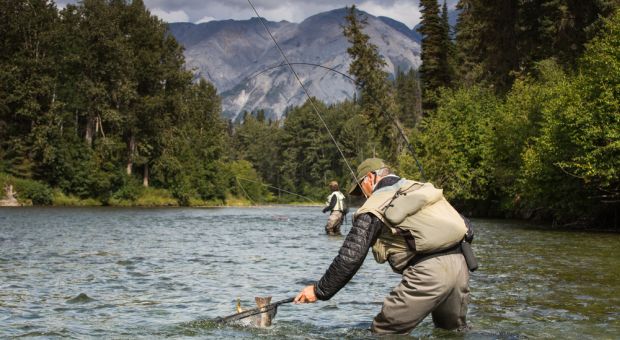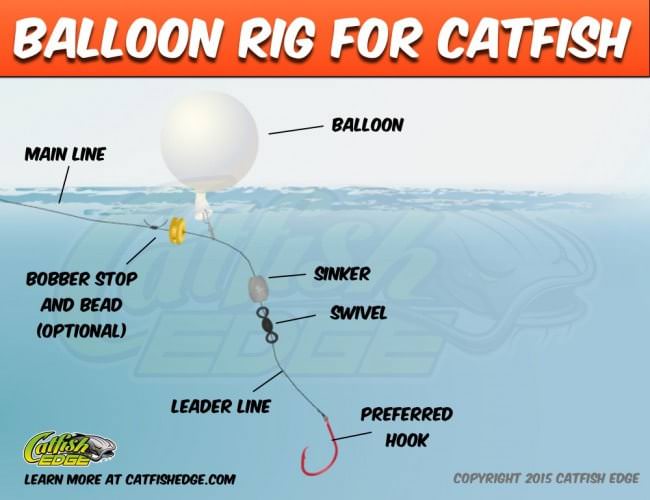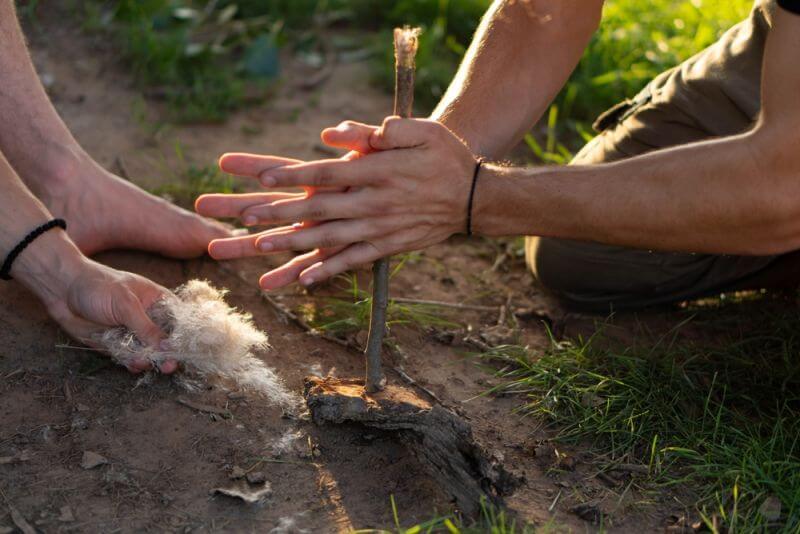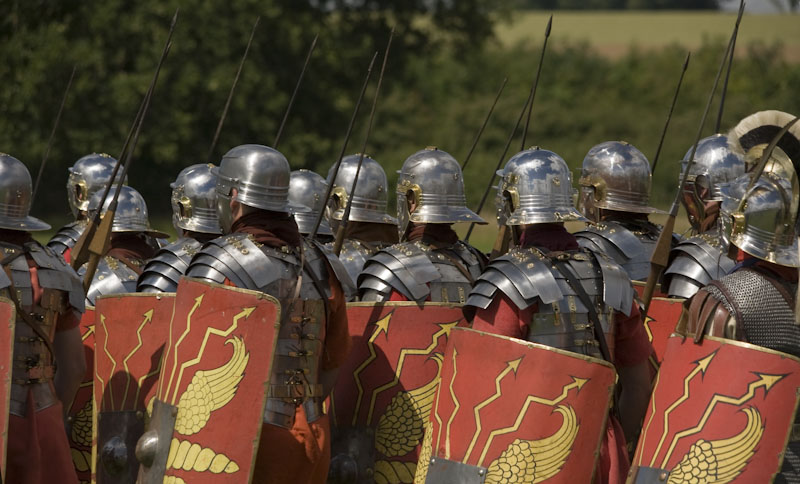Adaptability and innovation are the keys to survival in the extreme wilderness!
If you fancy experiencing wilderness, you must be aware of how survival comes above all other things. If you have been into hiking, you would know the importance of staying active. If you are into fishing in uncharted lands, you will know the essence of eating right to keep up the energy spirits.
When it comes to surviving, the potential resides in almost everything around us. You only need a creative mind and a passion for getting what you want using things around you. Such is the case with food alternatives.
Survival fishing is the art of collecting fish by using things around. These are the things you often use when your supplies are close to running out.
Are You Prepared for Survival Fishing?
When you are experiencing life in the mid of natural wonders, you need to survive and need food to obtain strength. Survival fishing will keep you motivated when you are opening the last can of beans you brought along. The best way to be prepared is to find a place near a pond, a river or a fresh stream of water.
Being prepared also involves keeping some fishing gear in your bag. This includes swivels, hooks, baits or small weights.
While you can search and create fishing gears using primitive methods, it is best to be prepared. You should bring along, if not a fishing rod, small fishing gear that will really be of assistance.
Choosing the Location
Wilderness can take you anywhere from high mountain peaks to the deepest coastlines of unknown shores. However, if you need food, you have to stroll where it can be found. Being close to the water does not necessarily mean that it will contain edible fish To overcome this challenge, you need to peek carefully into the water bodies to locate the spots where fish are gathering. Fish tend to change places according to the time of the day. So, it might be the case that a fish species might be assembling at a shoreline only in the evening.
This Is The Best Superfood That Can Last For Years
Following patterns and knowing the best places is the way to go.
Other places include beneath the rocks in the water or beside plants. This is because fish often look for a cover while swimming. You can easily find tiny fish near lily pads, grass or weeds. You can also search for tree trunks and other rocky foundations.
When you are fishing for survival in the wasteland, problems come without a warning. For instance, your hook might get tangled up badly. Also, using primitive methods will lower down your visibility.
You won’t have the assistance of modern-tech fish finders or locators to find the exact spot of fish. You have to trust your instinct and practice to make a perfect catch.
Choosing the right place will bring in more challenges but in turn, reward you with plenty of food. Going for the easy way will provide less sufficient rewards. The choice depends on your condition and how far you can stretch yourself to survive.
Making the Rod
To have complete control over your fishing gear, you need to have a rod. Start by searching the woods for an ideal option. You can also gather some large animal bones for the purpose. Long wooden branches are usually the ideal survival fishing gear. Green branches should be chosen above brown ones as these are flexible and help in luring out fish with ease. When you have found the rod, you can attach your line to the tip of the rod and hook to the other end.
If you don’t have a line, you can search for thin leaves or wires around. Usually, you will find a net near a beach or a pond’s edge that will serve as your line. You can also use thrones or pointy woods as your hook. If you wish to use better equipment, make sure that you bring along some of the good spincast reels. These will make things really easy.
Poison Fishing
Poison fishing is illegal and banned in most of the areas. However, when it comes to appetizing, you can use this extreme survival method to live another day. Poison fishing is mostly used in shallow pools of lake, river or the sea. You can find the poison by looking for walnut trees. Nut husks can very well be used in a large amount to act as a fish poison.
You can also form a powder of seashells and use it as a poison to kill the fish. You can first burn the seashells and then form a powder by crushing it with a stone.
Another standard method is to use plants as a poison. There are plenty of options if you start exploring. Some of the commonly found ones include Tephrosia vogelii, Euphorbia tirucalli, Gnidia kraussiana, Adenia lobat, and Balanites aegyptiaca.
Fishing with nets is another method bound by laws but can be practiced for survival. You can use drift nets to catch a large amount of fish. This phenomenon, similar to poison fishing, should only be practiced when there is an urgent need for surviving.
Spearfishing
If you are unprepared and come across an incident where you are trapped in a lone island, spearfishing can save you for a long time. A spear is easy to use and can be made out of things you easily find around. You can create a spear by chopping and then sharpening a wooden branch with a regular knife. Even if you forget to carry a knife, you can sharpen the spear by rubbing it using different angles on a stone.
To start spearfishing, chose a shallow spot and time when the fish are less active, usually mornings. Simply aim for the fish and strike when you feel that the moment is right. Spear fishing might sound simple, but is actually a test of your patience. Most of the time, you will fail at the start but you will improve with every shot you take. If lucky, you can get hands on two or three fish for a nice morning breakfast.
Balloon Fishing
As weird it might sound, balloon fishing is actually easy especially when you are short of options. The best thing is that a pack of balloons is easier to carry as compared to a fishing rod. You will need lots of hooks and a good pair of reels to fish with this floating soft rubberized gear.
To start fishing, inflate as many balloons as possible and attach the hook at the opening of each balloon. Attach your reel and lines to these hooks. The idea is to make balloons act as floating bait.
You can choose less showy balloons to make the baits appear natural. As soon as the fish will start pulling the balloon, you can pull back the reel and gather your catch. The technique is fairly simple and can inject elements of fun in your camping session.
Also, you can simply sit and relax instead of continuously changing the position of the bait using the fish rod.
Always remember, the more balloons you float, the more chances you have of catching the fish.
Fishing by Making a Trap
Known as one of the most ideal primitive methods, traps can be really helpful for satisfying a hungry stomach. If you are camping somewhere near water, you can spend some time and probably some guts to build a wall in the water. This can be done by using tree trunks, large leaves, stones, branches and plastic leftovers you find around you.
The fish will be fooled into going into the trap with the flow of the water. Once you have the fish in your trap, you can catch it using hands. The trap will be a self-operating dam that can bring in plenty of fish at the end of the day.
Check out the video below, showing the method of building a fishing trap.
Fishing with Hands
When all else fails, you can simply trust your body and use your hands as a weapon to catch fish.
This is more like a mind game than physical activity. You can lure down your fish to a shallow spot and force it to come out of the water, waiting for it to die slowly. You can also practice catching the fish in the water itself.
An important thing to note here is that fish might be too sloppy to catch. You need not to grab the fish too tightly as it will increase the chances of slipping. You can hold the fish gently while catching it quickly at the right instant.
Try using a bucket or a container to safeguard your hard-earned catch.
Concluding
Surviving might appear a tough task.
However, it doesn’t need to be that intimidating. If you know what to do and what things to look for, you can survive easily. Survival fishing is the top entity you need to learn amongst all other surviving skills. If you know how to do it, it will act as a good choice during the worst case scenario.
Survival fishing, in a way, makes us realize the importance of food and the best ways to get it.










Joe Pontek Sr | August 9, 2018
|
I have been fishing since I was 2 years old and have 73 years of stories to go with those years, but one of the most important lessons i have learned over those years is to use the smallest line you can going to the hook. It requires you to play the fish to land it, but it will raise your hit rate considerably. You will lose some due to line breakage, but your catches will increase as you learn to play the fish better. A springy pole works as a shock absorber to help from breaking the thinner line
vallie miller | August 9, 2018
|
is there any where i can get the books forgotten lessons of yesterday in book form and not as a download
Methane | August 9, 2018
|
Demi, I’m interested in learning more about Fish Poisioning. Could you tell us what the natural name is for the Latin Plants you listed? Thanks and a pretty interesting article!
Demi Rose | August 10, 2018
|
Hi Methane
It’s me, Demi,
Thank you for your concern, here are some plants people used to poison fish:
Euphorbia tirucalli: Pencil tree, Milk bush (https://en.wikipedia.org/wiki/Euphorbia_tirucalli)
Balanites aegyptiaca: soap berry tree or bush, and you can go through is via wiki: https://en.wikipedia.org/wiki/Balanites_aegyptiaca
Regards
Armin | August 9, 2018
|
You’ve given us some good ideas about survival fishing, Demi. Like the balloon idea. Fish hits the lure, the balloon gives a very positive indication of a strike. If I remember correctly there’s also something like a spring lure. Don’t know if that’s the correct name. You set it up and when the fish hits the bait it basically sets the hook for you, automatically. One thing I’d like to add about spearfishing, which was made “famous” by Tom Hanks in Castaway, is that water refracts light. And if you’re fishing with a spear and don’t take refraction into account you’ll miss the fish every time. I’m sure that if you’re starving you’ll learn quite quickly. If people aren’t familiar with the concept a good way to practice might be to put a small rock at the bottom of a water-filled 5 gallon container and see if you can hit the rock. Probably only take a few tries before most people get the idea. There are innumerable variations on the fish trap method. They all have one thing in common whether you weave baskets to catch fish or build something like the gentleman did in the video and that is, that they’re all built in the shape of a funnel. Fish swim in and can’t swim out. Thanks.
Mak63 | August 10, 2018
|
Automatic fish setting tool is a “yo-yo”
Lewis | August 9, 2018
|
Interesting article. Minor point. The plural of fish is fish, not fishes. Demi caught one fish. Demi caught three fish,
Alex | August 10, 2018
|
Hello!
Thank you for noticing that, Lewis! We’ve corrected the issue 🙂
Alex, from Survivopedia
William Halford | August 9, 2018
|
Beaver ponds can be a good source of fish. And if you can get the beaver that’s there, they’re edible too.
Demi Rose | August 10, 2018
|
Hi Methane
It’s me, Demi,
Thank you for your concern, here are some plants people used to poison fish:
Euphorbia tirucalli: Pencil tree, Milk bush (https://en.wikipedia.org/wiki/Euphorbia_tirucalli)
Balanites aegyptiaca: soap berry tree or bush, and you can go through is via wiki: https://en.wikipedia.org/wiki/Balanites_aegyptiaca
Regards
Lil Squirt | August 12, 2018
|
Thank you for the good ideas. Question on the balloon rig. What type of hook do you use to attach the balloon to the line? A fish hook might pop the balloon but you mentioned the balloon was to act like floating bait so I wasn’t sure.
Gary | August 22, 2018
|
Good article. I have fished for 55 years, and I can only remember a handful of times I have been totally skunked fishing.
I have fished every way know to man, nets, rod and reel, “noodling”, gigging, snagging, traps and some very illegal ways in my younger years.
However if I were in a survival situation, I would go with the basic fishing line and hook. Perch are located in every state, they are easy to catch and pretty tasty. In a 1 hour period you should be able to catch enough to last a couple of days, that is what I would fish for.
If you are making a survival kit, I would include these items. Monofilament in the 10-15 lb range, or Spiderwire in the 20 lb range, which is the same diameter as 4 lb Mono. (Spiderwire is super strong, and can be used for many other uses, i.e. snares, shelters, you can even use it to cut, I have cut my hands with it). Do not go for lures or flies, a simple 1/0 and a few smaller hooks are all that is needed. I would recommend circle hooks, if you havent fished a lot, circle hooks are more forgiving. I have caught 50 lb catfish on 1/0 hooks. I use to believe big fish, big hooks, wrong…I miss less fish on smaller hooks.
Bait for those hooks. Earthworms are easy found, under rocks, logs, leaves. I have yet to find a fish that would not inhale a worm. I have learned over the years of fishing, that natural bait is the only way to go. If it washes, flies, drops in the water then fish will eat it. I caught a 35 lb catfish on a dead bird. I was fishing under a bridge and birds had nested under it. Unfortunately not all the little birds were able to fly, or were pushed out of the nest. Guess what was waiting on them. I had a buddy who used mice to catch lunker bass. Grasshoppers, crickets, crayfish, other small fish, grubs, and just old every day bugs works well. The best way to fish these is simple tie the hook on, and let it drift. A long pole comes in handy, just a couple of feet of line, and you can cover a good area, just dropping it next to brush, trees, eddies or rapid moving water.
Now my survival fish cooking method, simple but no mess and no fuss. Gut fish (leave head on), pack mud about 1 inch all the way around and drop in hot bed of coals. When mud is hard. Break open (one side will have skin, the other side will have the rest of the fish. (you can pick the back bone out easily)
jack fisher | May 20, 2019
|
Hi Demi, thank you for this important 6 technique